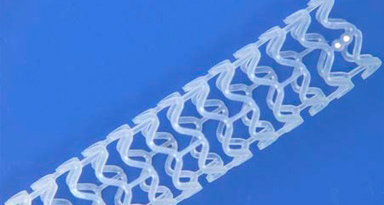J Am Coll Cardiol Intv has recently published a special issue on bioresorbable scaffolds. Abbott’s decision to pull Absorb off the market probably prompted the fast publishing of all related articles sent to the journal.
Bioresorbable scaffolds were developed in hopes that they would reduce the rates of events per year 1 year post-implantation by 1.5%-3% compared with bare metal stents.
However, bioresorbable scaffold Absorb has recently been pulled off the market for doubling the rate of thrombosis events within the first year of implantation. This device is no longer available, but after being the most used in the market for a long time, it has left behind many patients in need of proper advice.
Read also: “Very Late Thrombosis in Bioresorbable Scaffolds”.
This work sought to identify the main risk factors of thrombosis for Absorb within the first year of implantation.
There were 8771 consecutive patients who received this device. Among them, 105 patients (1.2%) experienced thrombosis within 1 year of implantation.
Early (within 1 month) thrombosis occurred in 69 patients and late (1 to 12 months) thrombosis occurred in the remaining 36 patients.
Read also: “A New Opportunity for Renal Denervation”.
There were significant correlations between thrombosis and final minimal lumen diameter <1.85 mm (odds ratio [OR]: 3.1; p = 0.004), discontinuation of dual antiplatelet therapy (OR: 3.1 to 3.5; p = 0.006 to 0.053), no post-dilatation with >1.1:1 balloon/scaffold ratio (OR: 2.3; p = 0.022), and reference vessel diameter <2.40 mm (OR: 2.1; p = 0.036).
Conclusion
Suboptimal vessel diameter, procedural technique, angiographic outcomes, and dual antiplatelet therapy discontinuation appear to be the main determinants of Absorb thrombosis risk within 12 months of implantation.
Editorial
The strength of this work lies in presenting the highest number of patients with thrombosis related to bioresorbable scaffold Absorb to date.
Several studies had already mentioned the importance of avoiding small caliber vessels and using a careful implantation technique (particularly as regards vessel preparation and balloon post-dilation), but the association between discontinuation of dual antiplatelet therapy and thrombosis had not been verified before. Recommending a minimum period for dual antiplatelet therapy is difficult, but a term of no less than a year can be seen as a cautious move.
Original title: Clinical, Angiographic, and Procedural Correlates of Acute, Subacute, and Late Absorb Scaffold Thrombosis.
Reference: Stephen G. Ellis et al. J Am Coll Cardiol Intv 2017;10:1809-15.
Get the latest scientific articles on interventional cardiologySubscribe to our weekly newsletter
We are interested in your opinion. Please, leave your comments, thoughts, questions, etc., below. They will be most welcome.






